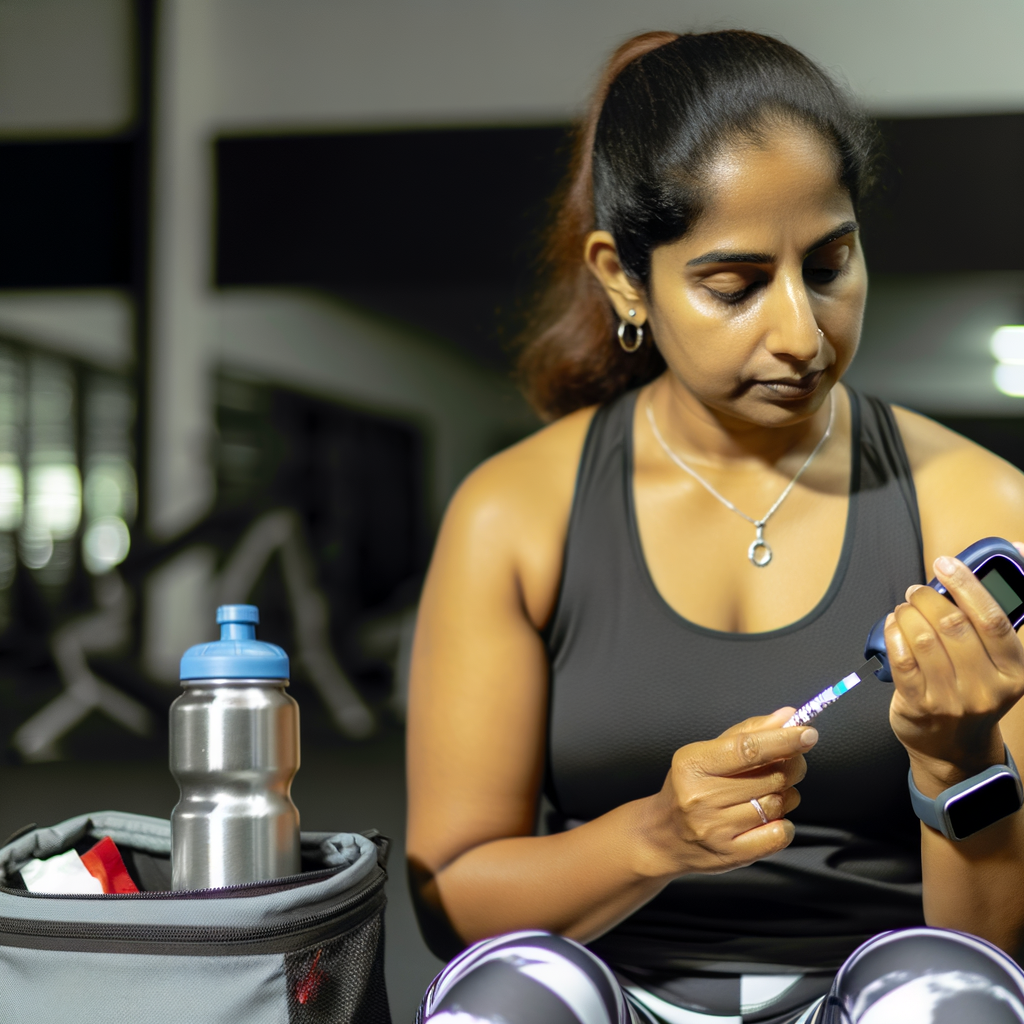Finding Your Balance: Exercising for Better Blood Sugar Management
Living with diabetes doesn't mean limiting your physical activities—quite the opposite! Regular exercise is one of the most powerful tools in your diabetes management toolkit. When done right, physical activity can dramatically improve your insulin sensitivity, help maintain healthy blood glucose levels, and reduce your risk of diabetes-related complications. But how do you create a workout routine that's both effective and sustainable? Let's dive in.
Why Exercise Matters for Diabetes Management
Exercise affects your blood glucose in multiple ways:
- Improved insulin sensitivity: Your muscles become more efficient at using insulin to absorb glucose from your bloodstream
- Lower blood glucose levels: During exercise, your muscles use glucose for energy, even without insulin
- Better weight management: Maintaining a healthy weight helps improve overall diabetes control
- Reduced cardiovascular risk: Regular activity strengthens your heart and improves circulation
- Stress reduction: Physical activity helps manage stress hormones that can raise blood sugar
These benefits apply to both type 1 and type 2 diabetes, though the specific effects and precautions may differ.

Building Your Foundation: Exercise Types to Consider
A well-rounded exercise routine for diabetes management should include:
Aerobic Exercise
Also known as "cardio," these activities increase your heart rate and breathing:
- Walking (particularly brisk walking)
- Cycling
- Swimming
- Dancing
- Low-impact aerobics
Recommendation: Aim for at least 150 minutes per week of moderate-intensity aerobic activity, spread across at least 3 days with no more than 2 consecutive days without exercise.
Resistance Training
These exercises build strength and muscle mass:
- Weight machines
- Free weights
- Resistance bands
- Bodyweight exercises (push-ups, squats)
Recommendation: Include 2-3 sessions per week, working all major muscle groups. Start with lighter weights and gradually increase.
Flexibility & Balance Work
Often overlooked but important for overall fitness:
- Yoga
- Tai chi
- Simple stretching routines
- Balance exercises
Recommendation: 2-3 times weekly, especially beneficial for older adults or those with neuropathy.

Monitoring Blood Glucose During Exercise
One of the most crucial aspects of exercising with diabetes is understanding how activity affects your blood glucose:
- Check before exercise: Ideal pre-exercise range is typically 90-250 mg/dL (5.0-13.9 mmol/L)
- Check during longer workouts: For sessions lasting more than an hour, consider checking midway
- Check after exercise: Monitor how different activities affect your levels
- Keep logs: Track which activities cause rises or drops in your numbers

Special Considerations for Different Types of Diabetes
Type 1 Diabetes
- More prone to exercise-induced hypoglycemia
- May need to reduce insulin doses before planned exercise
- Might need carbohydrate snacks before, during, or after workouts
- Should avoid injecting insulin into areas that will be heavily used during exercise
Type 2 Diabetes
- Generally experiences more predictable blood sugar responses to exercise
- May see dramatic improvements in insulin sensitivity with consistent activity
- Should still monitor for potential hypoglycemia, especially if taking insulin or certain medications
- Morning exercise may help control post-meal blood sugar throughout the day
Creating Your Personalized Exercise Plan
Follow these steps to develop a routine that works for you:
- Consult your healthcare team: Before starting any new exercise program, speak with your doctor or diabetes educator
- Start slow: Begin with 5-10 minutes daily if you're currently inactive
- Gradually increase: Add 5 minutes each week until you reach your target duration
- Mix it up: Combine different types of exercise to get comprehensive benefits
- Schedule it: Block time on your calendar for exercise—make it non-negotiable
- Find activities you enjoy: Exercise doesn't have to be a chore; dancing, gardening, and recreational sports all count
- Use technology: Consider fitness trackers or apps that can help you monitor both exercise and blood sugar patterns
Sample Weekly Routine for Beginners
Here's what a balanced weekly routine might look like for someone new to exercise:
- Monday: 20-minute brisk walk + 10 minutes of simple stretching
- Tuesday: 15 minutes of resistance band exercises
- Wednesday: Rest day or gentle yoga
- Thursday: 20-minute bike ride
- Friday: 15 minutes of bodyweight exercises (squats, modified push-ups, etc.)
- Saturday: Longer 30-minute walk
- Sunday: Active rest day (light gardening, casual swimming, etc.)
Safety Tips and Precautions
- Wear proper footwear: Especially important if you have neuropathy
- Stay hydrated: Drink water before, during, and after exercise
- Carry identification: Wear a medical ID and carry emergency contact information
- Pack glucose sources: Always have fast-acting carbs like glucose tablets nearby
- Exercise with a partner: When possible, exercise with someone who knows about your diabetes
- Watch for warning signs: Know the symptoms of high and low blood sugar and how to treat them
Final Thoughts
Remember that consistency trumps intensity when it comes to managing diabetes through exercise. The best workout routine is one that you can maintain long-term. Start where you are, progress at your own pace, and celebrate every step forward on your journey to better health.
Your body will adapt to regular exercise over time, potentially requiring adjustments to your medication or meal plan. Work closely with your healthcare team to make these adjustments safely. With patience and persistence, you'll discover that exercise isn't just a treatment for diabetes—it's a pathway to feeling stronger, more energetic, and more in control of your health.

References
Colberg, S. R., Sigal, R. J., Yardley, J. E., Riddell, M. C., Dunstan, D. W., Dempsey, P. C., Horton, E. S., Castorino, K., & Tate, D. F. (2016). Physical Activity/Exercise and Diabetes: A Position Statement of the American Diabetes Association. Diabetes Care, 39(11), 2065–2079. https://doi.org/10.2337/dc16-1728
American Diabetes Association. (2023). Standards of Medical Care in Diabetes—2023. Diabetes Care, 46(Supplement 1). https://diabetesjournals.org/care/issue/46/Supplement_1






